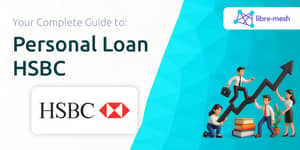
Managing personal finances can often feel overwhelming in a world of rising expenses and unpredictable income streams. Juggling multiple due dates, keeping track of subscriptions, and ensuring timely payments is a constant challenge. This article explores how leveraging modern budgeting software combined with integrated bill pay features can transform the way you handle money.
By unifying budgeting and payment processes into a single platform, you can gain stronger control over spending, set actionable goals, and avoid late fees. Whether you’re new to digital finance tools or seeking to upgrade your current system, the insights and practical advice here will help you streamline your financial journey with clarity and confidence.
At its core, budgeting software is designed to track income and expenditures, categorize transactions, and provide visual insights into spending patterns. These applications typically connect to bank accounts and credit cards, automatically updating your ledger each time funds move. The goal is to offer a comprehensive financial overview that empowers users to make informed decisions about saving, investing, and spending.
Beyond simple record-keeping, advanced budgeting tools often include goal-setting modules for emergency funds, debt payoff plans, or major purchases. Users can define savings targets, monitor progress with charts, and receive personalized advice on adjusting spending habits. This level of transparency encourages financial discipline and turns abstract numbers into tangible milestones.
One of the most impactful features of modern budgeting software is bill pay integration. By linking bills directly to your financial dashboard, you eliminate the need to visit multiple websites or apps every month. This convenience ensures that you never miss a payment deadline, which in turn protects your credit score and prevents late fees.
Automated reminders and payment scheduling transform a once tedious task into a seamless process. When your bills are visible alongside daily expenses, you can balance discretionary spending with fixed obligations. This unified approach reduces stress and fosters a habit of proactive financial management.
The market for personal finance apps has never been more diverse, with options tailored to different budgeting philosophies and user preferences. Some tools excel at envelope budgeting, while others focus on real-time insights. Below is a detailed comparison of leading solutions, highlighting their core capabilities and the extent of their bill pay integration.
While many popular budgeting tools do not yet offer native bill payment, pairing them with specialized bill-management services can achieve a similar outcome. As fintech continues to evolve, we can expect deeper integration that blurs the line between budgeting and transactional platforms.
Selecting the best budgeting software hinges on your unique priorities—whether that’s simplicity, robust automation, or advanced financial planning. Consider which features will make the biggest impact on your day-to-day routine and long-term goals.
Test-drive free trials or demo versions to gauge how intuitive the setup feels. Pay attention to customer reviews, especially regarding customer service and data reliability. The right choice should align with both your financial complexity and your comfort with technology.
Once you’ve chosen a platform, setting up your budgeting software is the next critical step. Start by connecting all relevant accounts—checking, savings, credit cards, and loans. Most apps use secure APIs to fetch transactions automatically, reducing manual data entry and human error.
After syncing accounts, customize your expense categories and allocate funds according to your budget. Establish recurring payments within the software and enable reminders or auto-pay features to automate your bill payments. If your chosen tool supports reconciliation, review each month’s transactions to ensure accuracy and adjust budgets as needed for evolving financial patterns.
Despite the clear advantages, users often hesitate due to security worries or the perceived complexity of digital tools. To build confidence, look for platforms with strong customer reviews and transparent security policies. Setting up two-factor authentication and regularly updating passwords can further fortify your accounts.
Habit formation is another hurdle. Treat your monthly budgeting review like a routine appointment—block off time in your calendar and set automated reminders. When finances become a regular part of your schedule, you’ll notice reduced anxiety and greater control over spending decisions.
As fintech innovation accelerates, we anticipate features such as artificial intelligence can deliver advanced predictive spending insights. Voice-activated assistants may soon allow you to schedule bill payments with simple verbal commands. Open banking standards will also expand secure data sharing, enabling more seamless connections between budgeting apps and billers.
These enhancements promise smoother and faster account connections and an even more unified approach to managing income, expenses, and obligations. The aim is to empower users to stay ahead of financial obligations while freeing up mental bandwidth for the things that matter most in life.
Your financial journey is deeply personal, but you don’t have to navigate it alone. By adopting budgeting software with integrated bill pay features—or effectively layering the two—you can reduce stress, maintain healthy credit, and achieve your monetary aspirations.
Take the first step today: choose a tool, set up your account, and embark on a path toward financial clarity and confidence that can transform everyday stress into sustainable peace of mind.
References













